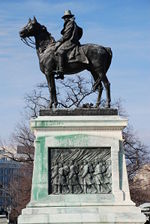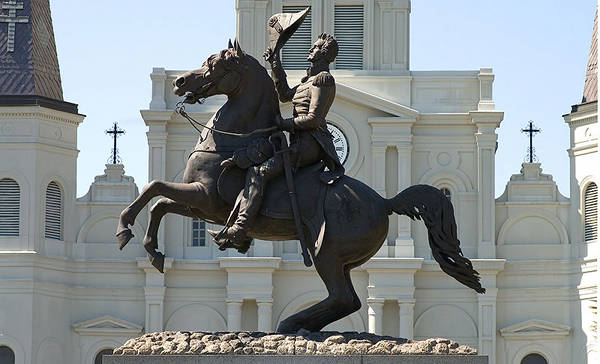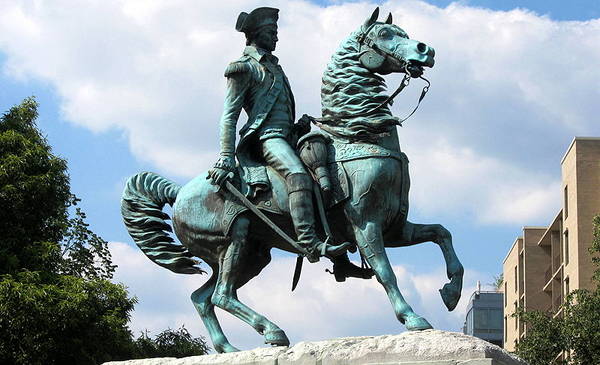 There is a commonly held belief that equestrian statues follow a sort of code, which essentially dictates how the rider died. While it seems like it could make sense, all it takes is stopping to consider just how many equestrian statues exist in this world of ours.
There is a commonly held belief that equestrian statues follow a sort of code, which essentially dictates how the rider died. While it seems like it could make sense, all it takes is stopping to consider just how many equestrian statues exist in this world of ours.
Sorry to Break it to You, But…
While the notion is rather romantic, there is no universal code for equestrian statues. The scope of that would be impossible on a number of levels. Consider the passionate temperament of artists, this would mean that artists the world over would need to have met, discussed & agreed on such an rule.
The Lore Itself
The idea is that equestrian statues follow a code which signifies how the rider fared in battle by how many of their mount’s feet are raised from the ground.
One Hoof – If one hoof is raised they were wounded in battle, but may not have died as a result of those wounds.
Two Hooves – If two hooves are raised the rider died in battle.
Four Feet on the Ground – All feet on the ground indicates that the rider survived battles unharmed and died another way.
It Came From Somewhere
The idea is purely folk wisdom as it is transmitted today, however it stems from something very real. This code does apply to (some of the) Gettysburg equestrian statues in Washington D.C., although maybe only 1 in 3 actually fits said rules.
Avoiding Trends
Just to prove my point, here are a few examples of equestrian statues around the US that don’t follow the ‘traditional’ code.


Don’t Shoot The Messenger
One of me earlier posts was a list of 10 horse facts and this was by far the most disputed fact, so I thought it was worth a quick article. The only way people will know the truth is if it’s placed in front of them & if you don’t believe me, perhaps Snopes will convince you.

Huh. Even if it doesn’t mean anything, I guarantee you any statue that has a horse as opposed to just a person definitely gets my attention! They are often wonderful works of art, they could allmostcanter right off that pedestal.
Hi Equinest,
The esquestrian statue etiquette has been
explained in New Orleans as :
Both hoofs in the air rider went on to bigger
and better things i.e. Andrew Jackson
(BTW, your picture of him on his mount is actually
In Jackson Square in front of the Saint Louis Cathedral NOT Lafayette Square )
Statue of Saint Joan of Arc in New Orleans
has left hoof in air and died as a result of battle.
Statue of General P.G.T. Beauregard has right hoof in air, survived battle.
That’s the best explanation we have here in the
Beautiful Crescent City